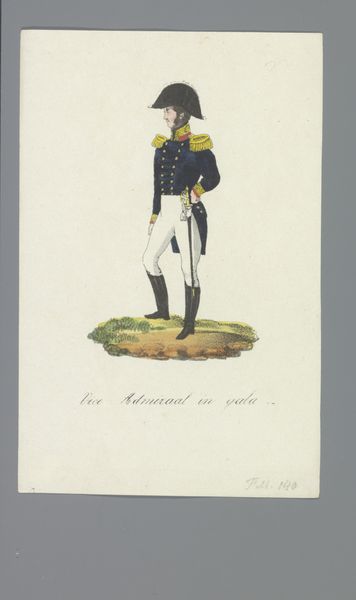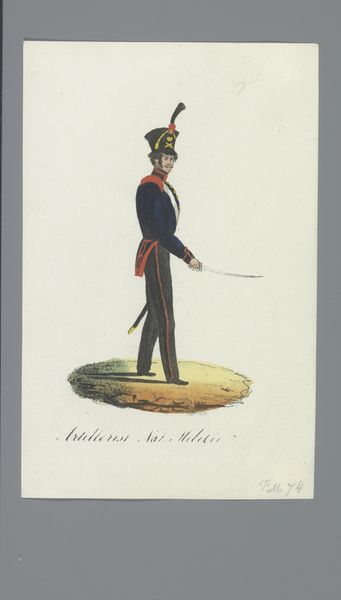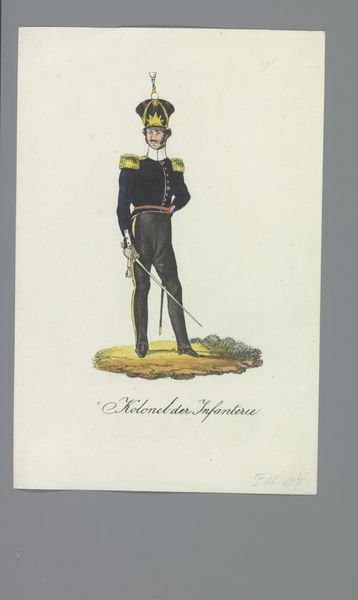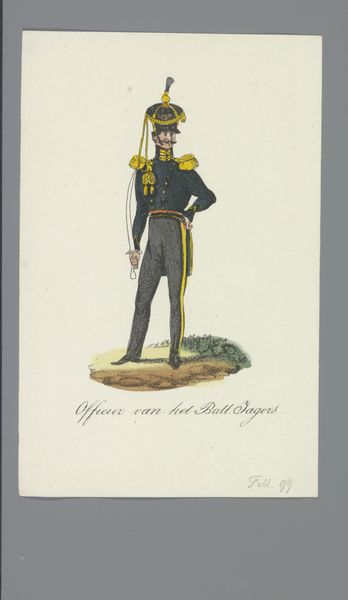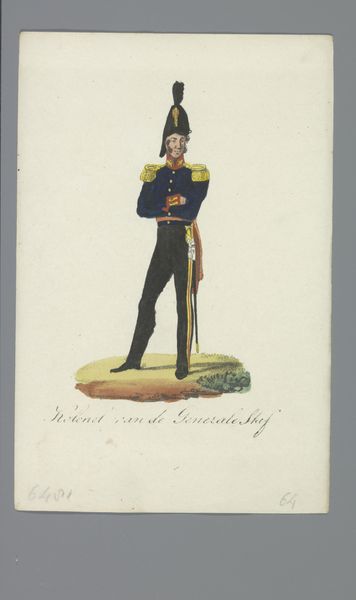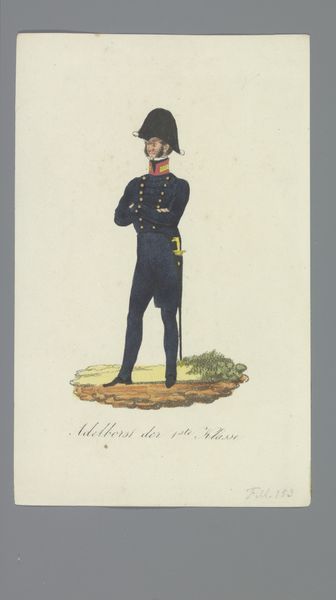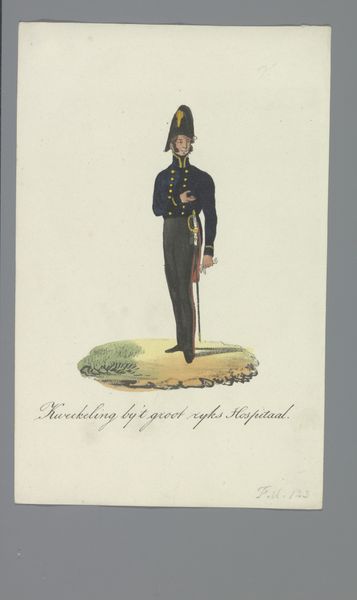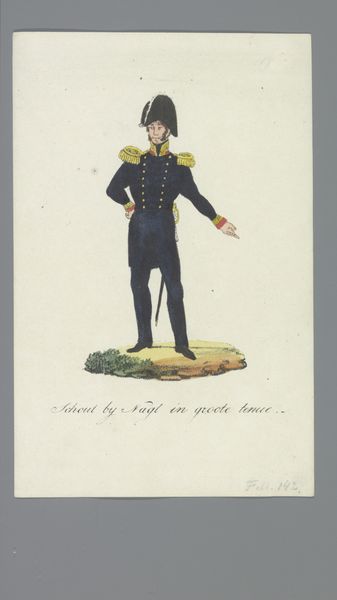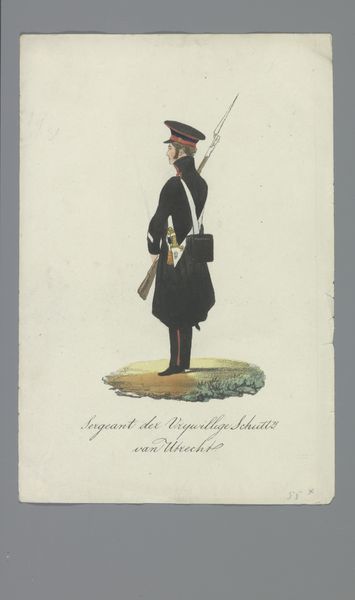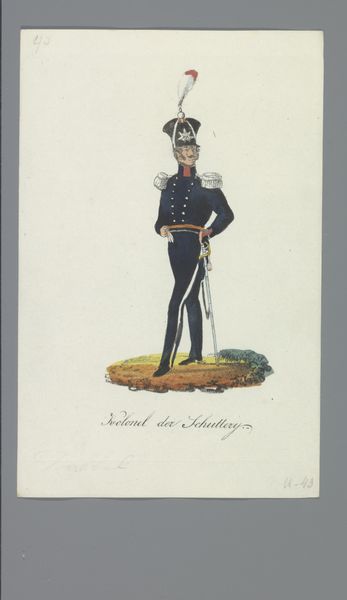
drawing, paper, pen
#
portrait
#
drawing
#
figuration
#
paper
#
romanticism
#
costume
#
pen
#
genre-painting
#
history-painting
#
academic-art
#
watercolor
Dimensions: height 170 mm, width 110 mm
Copyright: Rijks Museum: Open Domain
Curator: Oh, there's something so charmingly self-assured about this fellow, isn't there? The crossed arms, the confident stance... Editor: Indeed. We are looking at an artwork titled "Officier Artill: Militie," attributed to Albertus Verhoesen, likely created between 1835 and 1850. It's currently held in the Rijksmuseum. But beyond the dates and titles, what do you read in this man’s portrait? Curator: An air of both playful dandyism and… seriousness. Like a toy soldier contemplating real battle. The artist beautifully captured that ambivalence. The bright trim on his dark blue jacket! It gives a visual kick against what otherwise might seem somber. Makes you want to ask what his day looks like. Editor: And the sword—symbol of power, authority, and… let’s face it, patriarchal structures—prominently displayed at his side. The confident pose can also be interpreted as an assertion of dominance and social control, which the militaristic man held at the time, can it not? Who were the marginalized during the Romantic era and how might they have interpreted this image? Curator: It’s the Romantic era in a nutshell, isn't it? Ideals, grand passions, a certain wistfulness... a kind of theatre and pageantry. And while the artwork presents this officer in what looks to be, to me, a proud stance, Verhoesen doesn't shy away from including the vulnerability implicit in being the subject and enforcer of societal and military expectations. What I notice are the muted colors in his face, or the way the horizon cuts him off, offering no path, suggesting perhaps a man stuck between performance and duty. Editor: Yes, and perhaps the reality of being a soldier. The romanticized image of warfare versus its actual brutal consequences is always a tension within military portraits of this era. These objects are, historically, loaded and require interrogation on multiple fronts. The visual culture perpetuates, reinforces, and celebrates this patriarchal society and its ideals. Curator: You're so right. It's the push and pull, isn’t it? He’s a figure caught between worlds: an almost melancholy soldier with gorgeous pops of golden yellows. The artist manages to complicate an otherwise conventional trope of the era—militaristic bravado. I love art for this very reason! Editor: Precisely! The complexities, the tensions... Thank you, that's all from us for today.
Comments
No comments
Be the first to comment and join the conversation on the ultimate creative platform.
